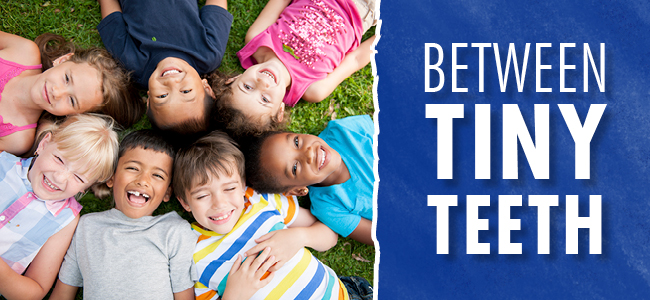
Even though baby’s first teeth are temporary, getting an early start on excellent dental hygiene practices, including both brushing and flossing, is essential to a lifetime of good oral health. Dental decay is one of the most common childhood diseases. According to the Centers for Disease Control and Prevention (CDC), 42% of children ages 2 to 11 have had cavities in baby teeth, and 21% of those ages 6 to 11 have had cavities in permanent teeth.
Tooth decay not only poses a threat to tiny teeth, it can negatively affect a child’s whole health, as well as how they feel about themselves. One of the longest-lasting benefits of a healthy smile during childhood is the foundation for a healthy self-image.
Start Early
Brushing
You should begin cleaning a baby’s gums after each feeding with gauze or a soft cloth starting immediately after birth. As soon as the baby teeth begin to erupt, you can use a soft-bristled child’s toothbrush to clean your toddler’s teeth. Continue brushing for them until they have the dexterity to take over (approximately around 6 years old).
Flossing
Flossing is difficult for small, untrained hands. Your child doesn’t have to begin brushing right away, but once their tooth surfaces are almost touching, plaque and food begin to settle in between teeth, which can lead to gum disease and tooth decay. At this point, they should begin learning to floss and doing so at least once a day.
Teaching your child to floss can be tricky. The following steps will help you get them off to an easy start.
- Choose soft, flavored floss that’s gentle on your child’s gums and tastes good.
- Measure out a length of floss that runs from your fingers to your elbow.
- Wrap the floss around your child’s fingers as you would your own when flossing, but make sure it isn’t so tight that it cuts off circulation or causes any discomfort.
- Gently guide your children’s fingers, and show them how to glide the floss between the teeth.
- Show them how to make the floss into a C shape and curve it carefully beneath the gum line.
- Make sure they shift the floss to the next finger between each tooth so that they use fresh floss in each space.
At first flossing may be difficult and even frustrating for your little one. They may not like wrapping the string around their fingers, or they may just find changing the wrap of the floss too difficult. Fortunately, there are a wide variety of child-friendly floss sticks available in different colors and flavors. They come in packs of 50 to 100, giving your little one room for error. Make sure they dispose of each floss stick after use.
If your child is having an extra difficult time learning to floss, or if they have braces, consider trying the Waterpik Water Flosser for Kids. It’s made with a simple design that makes flossing easy for children over the age of 6. It is child safe and designed for small hands, so that your child’s frustration will be alleviated and their teeth will get cleaned properly.
As your children develop, they will be able to execute flossing with ease and can decide whether to continue using their flossing stick or a Waterpik, or whether to take the more traditional route.
For more information and help educating your child on the importance of their oral hygiene practices, call us today. We prepare you with information and instructions on how to clean your child’s teeth, as well as how to teach your child to clean their own teeth — or we can teach them with you.

